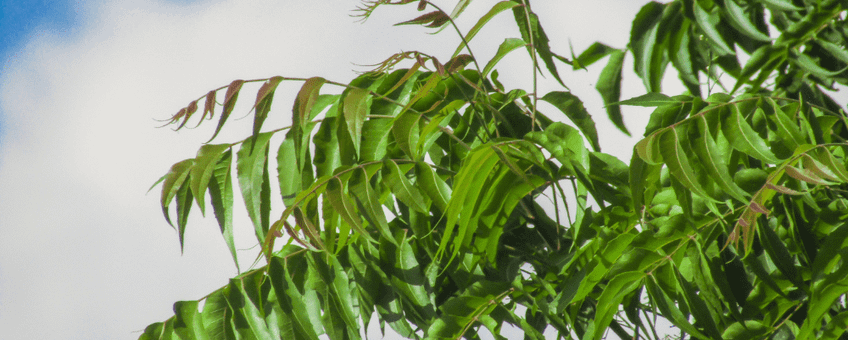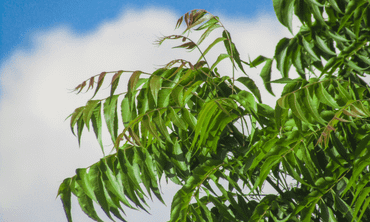
Getting to the root of the neem problem
Dutch Caribbean Nature Alliance (DCNA) The neem tree (Azadirachta indica) is part of the mahogany family and often popular in gardens as it is easy to grow and quickly provides a nice, shaded canopy. This evergreen tree can reach heights of twenty meters, and has a beautiful, fragrant white flower, which along with its fruits, are collected to make neem oil. In India, it's common to collect and dry the leaves to use as a natural insect repellent. The neem tree was introduced to Curacao between twenty to thirty years ago, and after that to Aruba and Bonaire. So it is easy to see how quickly this tree can become an issue, as it has become widespread on all three islands within this relatively short time frame.
The neem tree (Azadirachta indica) is part of the mahogany family and often popular in gardens as it is easy to grow and quickly provides a nice, shaded canopy. This evergreen tree can reach heights of twenty meters, and has a beautiful, fragrant white flower, which along with its fruits, are collected to make neem oil. In India, it's common to collect and dry the leaves to use as a natural insect repellent. The neem tree was introduced to Curacao between twenty to thirty years ago, and after that to Aruba and Bonaire. So it is easy to see how quickly this tree can become an issue, as it has become widespread on all three islands within this relatively short time frame.
Impacts
One of the primary impacts of the invasive neem tree in the Caribbean is its ability to outcompete native species. The tree grows rapidly, and its roots secrete chemicals that inhibit the growth of other plants in the vicinity. Neem trees also create dense, shaded canopies that prevent other plants from receiving the sunlight they need to thrive. Furthermore, the deep roots of the trees alter soil composition by pulling nutrients and water from the soil, leaving less available for other plants. This can lead to soil erosion and other environmental issues, especially in areas where the soil is already nutrient-poor.
Another impact of invasive neem trees is their effect on local wildlife. The dense canopies created by neem trees can serve as habitats for some species, but they can also make it difficult for animals to move freely through their native territories. For example, birds that rely on open spaces for hunting or nesting may struggle to find suitable areas when neem trees are present.
 Finally, invasive neem trees can also have economic impacts for the Dutch Caribbean islands. The trees can make it difficult for farmers, as they can outcompete or shade out food crops. In addition, the water seeking roots of the neem tree can quickly damage roads, sidewalks and building foundations, generating significant economic consequences for the islands.
Finally, invasive neem trees can also have economic impacts for the Dutch Caribbean islands. The trees can make it difficult for farmers, as they can outcompete or shade out food crops. In addition, the water seeking roots of the neem tree can quickly damage roads, sidewalks and building foundations, generating significant economic consequences for the islands.
Implications
Overall, the impact of invasive neem trees on the Dutch Caribbean islands is significant and multifaceted. While neem trees have many beneficial qualities, their invasive nature means that they can have negative effects on local ecosystems and economies. As a result, projects to manage and control invasive neem trees are becoming increasingly important in the region. Efforts are currently underway to control the spread of the tree and restore affected ecosystems. However, addressing the issue will require a collaborative effort between policymakers, scientists, and local communities to find sustainable solutions that balance economic, social, and environmental concerns.
DCNA
The Dutch Caribbean Nature Alliance (DCNA) supports science communication and outreach in the Dutch Caribbean region by making nature-related scientific information more widely available through, amongst others, the Dutch Caribbean Biodiversity Database, DCNA’s news platform BioNews and the press. This article contains the results from several scientific studies but the studies themselves are not DCNA studies. No rights can be derived from the content. DCNA is not liable for the content and the in(direct) impacts resulting from publishing this article.
Text: DCNA
Pictures: Madhav Malleda; Mohammad Ibrahim
